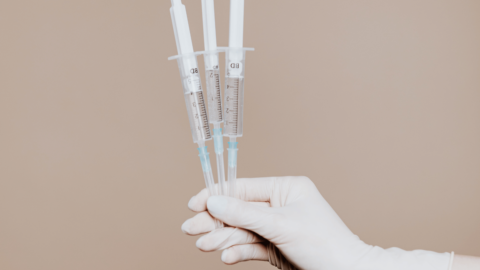The journey of treating opioid use disorder (OUD) has been a remarkable one, with the advent of medication-assisted treatments bringing new hope and optimism. Sublocade and Suboxone, two leading medications in this field, stand as a testament to this progress. But what sets them apart? And how did they emerge as pillars in medications for opioid use disorder (MOUD)?
We’ll look at their unique features, the differences, and what it all means for those on the path to recovery.
A Quick History of MOUD: From Basic Options to Modern Solutions
Before medications like Suboxone and Sublocade, treatment for opioid addiction often involved methods that were either highly restrictive or lacked long-term effectiveness.
The goal was always to manage withdrawal and reduce cravings, but early approaches like methadone required frequent visits to clinics, creating some big barriers to treatment.
The Game Changer: Buprenorphine and Suboxone
Buprenorphine’s approval in 2002 marked a significant shift. It was the first medication for OUD that could be prescribed by certified doctors outside specialized clinics, expanding access. Shortly after, Suboxone—a mix of buprenorphine and naloxone—was introduced, adding a layer of misuse deterrence.
The Modern Leap: Sublocade
Fast forward to 2017, when Sublocade, a monthly buprenorphine injection, entered the scene. This innovation answered a critical need: a long-acting treatment that maintained steady medication levels and reduced the burden of daily dosing.
Sublocade vs. Suboxone: The Basics
Both Sublocade and Suboxone use buprenorphine as their main active ingredient, but their methods of administration and flexibility set them apart.
Sublocade: A Monthly Injection
- Extended Release: A single injection per month that delivers consistent buprenorphine levels.
- Healthcare Professional Required: Must be administered by a qualified provider.
- Convenience with Conditions: Eliminates the need for daily dosing but requires appointments.
Suboxone: The At-Home Option
- Daily Dosing: Taken as an oral film or tablet under the tongue.
- Includes Naloxone: Helps prevent misuse if the medication is injected or altered.
- Accessible Treatment: Can be managed independently at home, allowing for more privacy and convenience.
Comparing Sublocade and Suboxone
| Feature | Sublocade | Suboxone |
| Administration | Monthly injection | Daily oral dose |
| Requires Healthcare Professional | Yes | No, self-administered |
| Naloxone Component | No | Yes, deters misuse |
| Adherence | Simplified, monthly | Requires daily commitment |
| Ideal For | Patients seeking long-term, low-maintenance treatment | Those needing flexibility and control |
Why Suboxone Is the More Flexible Choice
Independence in Treatment
One of Suboxone’s greatest strengths is its ability to be taken independently at home. This is especially important for individuals with busy lives or those who may find regular visits to healthcare facilities challenging. While Sublocade offers the benefit of long-acting relief, it requires monthly visits to a healthcare provider for administration.
For many, the convenience of Suboxone makes sticking to treatment more feasible.
Misuse Deterrence
The naloxone component in Suboxone serves as a safety feature, discouraging misuse. If someone attempts to inject it, naloxone activates, blocking opioid effects and helping to prevent potential misuse, thereby enhancing the safety of the medication.
Accessibility
Suboxone, with its easy accessibility through a prescription and manageable nature without frequent medical visits, instills a sense of reassurance and confidence. It is an ideal choice for those who seek more control and fewer obligations tied to their treatment plan.
FAQs on Sublocade vs. Suboxone
Is Suboxone as effective as Sublocade?
Yes, both Suboxone and Sublocade effectively manage withdrawal and cravings. However, Suboxone’s daily dosing may encourage active patient involvement and help some stay more engaged in their recovery.
Which is easier to access?
Suboxone is typically easier to access because it doesn’t require administration by a healthcare professional. It can be prescribed through an outpatient consultation and managed at home.
What about side effects?
Both medications share side effects like nausea, headache, and constipation, but Sublocade might include injection-site reactions. Suboxone users avoid this and can take their medication in a more comfortable, familiar setting.
Making the Right Choice for Your Recovery
When it comes to Sublocade vs. Suboxone, your lifestyle and treatment preferences play a huge role. Suboxone is a strong option for those looking for flexibility, independence, and ease of use. It offers a reliable, effective way to manage opioid use disorder without being tied to a clinic or frequent appointments.
At QuickMD, we provide a seamless way to access MOUD, including Suboxone, with convenient online consultations that fit your schedule. Take control of your recovery journey today—explore our treatment options and see how we can support your path to better health.
Final Thoughts: Choosing Between Sublocade and Suboxone
While Sublocade offers a no-daily-reminder approach, Suboxone wins in terms of flexibility and independence. Deciding between the two depends on how you want your treatment to fit into your life. With QuickMD, finding what works for you is just a click away. Ready to begin? We’re here to help you choose the path that leads to success.




